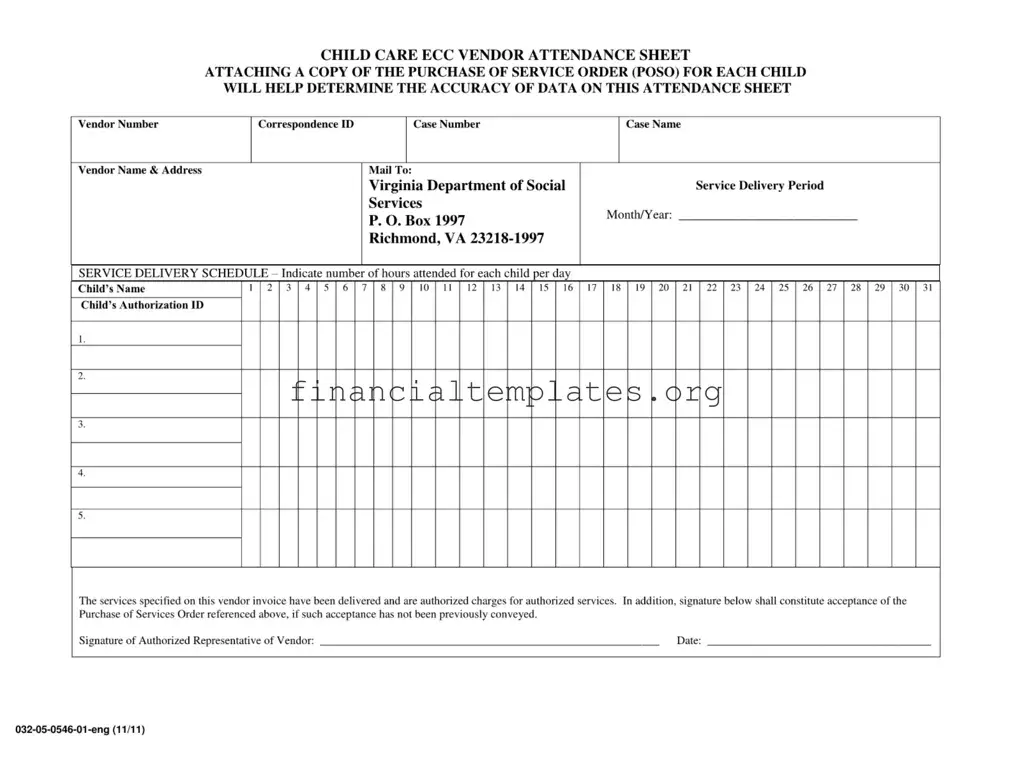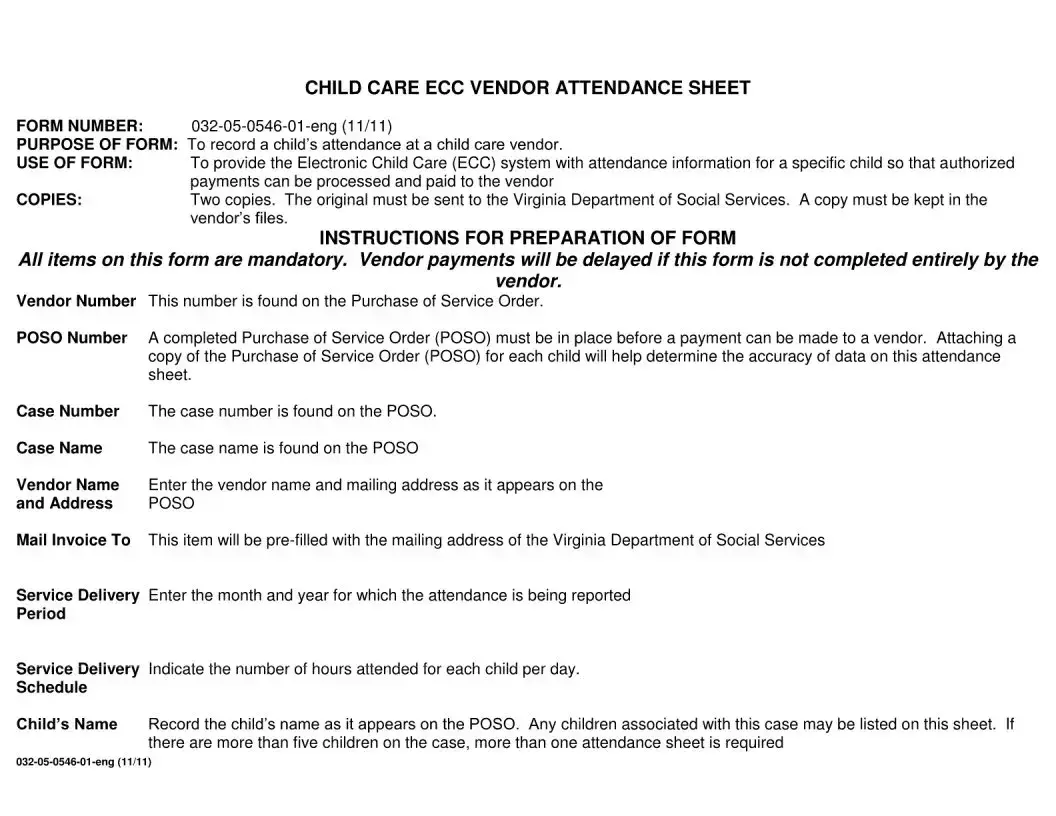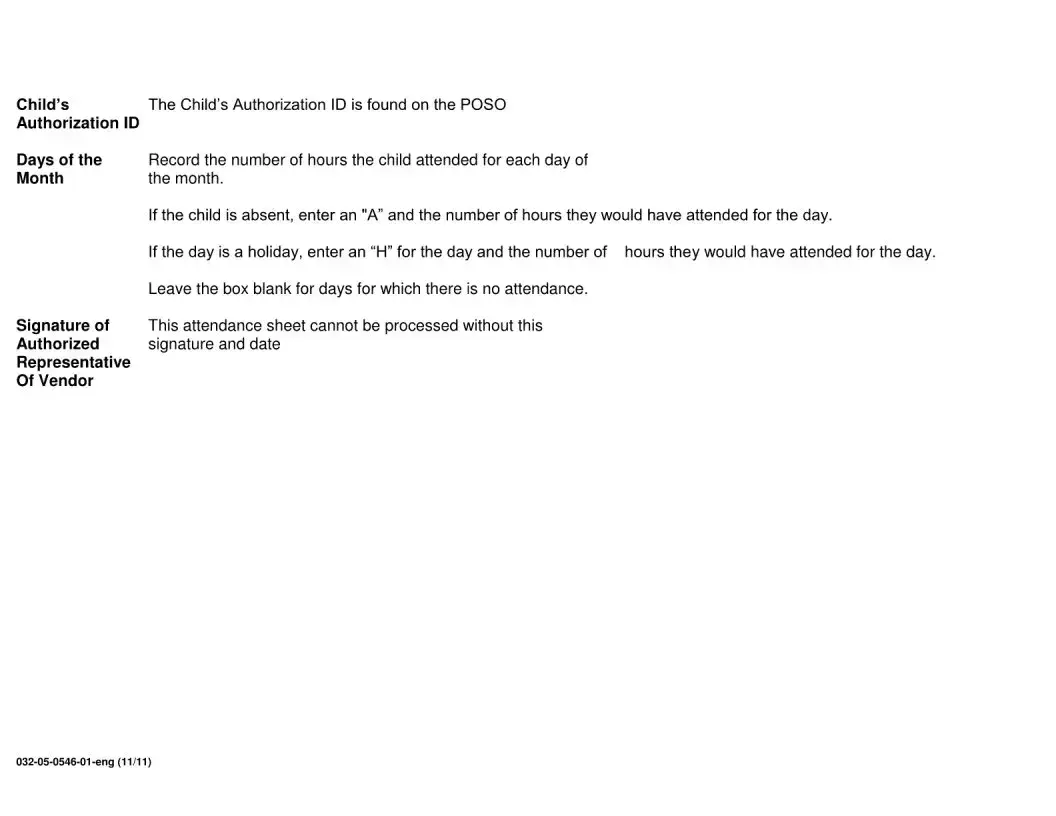The VA ECC Payment Schedule form shares similarities with the Child Care Attendance Record often used by daycare and child care centers. Both documents are vital for tracking the attendance of children under their care. The Child Care Attendance Record, like the VA ECC form, typically requires the child’s name, dates of attendance, and verification by a responsible individual, ensuring accurate record-keeping for billing and compliance with state child care attendance policies.
A Timesheet for Child Care Services is another document that aligns closely with the VA ECC Payment Schedule form. This document tracks the hours worked by childcare providers, offering a detailed account similar to how the ECC form records the number of hours a child attends a program. Both documents serve to streamline the process for remuneration purposes, ensuring childcare providers are fairly compensated for their services.
The Child Care Invoice is similarly structured to the VA ECC Payment Schedule form in that it is used to bill for childcare services rendered over a specific period. The invoice typically includes the child's name, the services provided, and the total amount due. Like the ECC form, it plays a crucial role in the financial transactions between childcare providers and parents or guardians, often backed by attendance records to validate charges.
The Monthly Attendance Sheet for Child Care, like the VA ECC Payment Schedule form, tracks the attendance of children in care, often used for both internal tracking and billing purposes. This document highlights attendance patterns and is essential in ensuring accurate billing and record-keeping, similar to how the ECC form provides a daily attendance breakdown.
The Child Care Subsidy Application Form, while primarily used for a different purpose—applying for childcare financial assistance—shares a common goal with the VA ECC Payment Schedule form: ensuring accurate and fair childcare payments. This form collects detailed information about the child, the family's financial situation, and the childcare provider to determine eligibility for subsidies, paralleling the ECC form’s role in facilitating accurate childcare payments.
The Daily Sign-In and Sign-Out Sheet for Child Care serves a similar purpose to the VA ECC Payment Schedule form in tracking the entry and exit times of children in care. This document, used daily, records the precise time children are dropped off and picked up, contributing to the safety and security protocols of childcare facilities and ensuring accurate billing, akin to the detailed attendance tracking on the ECC form.
The Child Care Provider Agreement is a formal contract between childcare providers and parents or guardians but shares an underlying connection with the VA ECC Payment Schedule form through its focus on service delivery terms, including payment schedules. Both documents outline detailed expectations and responsibilities, ensuring clarity and accountability in the provision of child care services.
The Child Care Enrollment Form, though primarily focused on gathering initial information about a child entering a new childcare setting, indirectly supports the processes outlined in the VA ECC Payment Schedule form. By collecting critical data upfront, it aids in the seamless tracking and billing processes that are detailed in the ECC form, ensuring all parties have a clear record from the onset of care.
The Child's Weekly Meal Log in child care settings, though primarily centered around tracking nutritional intake, shares a common theme with the VA ECC Payment Schedule form in the meticulous daily tracking for compliance and reporting purposes. This log, like the ECC form, involves daily documentation and contributes to overall child welfare within care settings, underscoring the importance of accurate and consistent record-keeping.
The Absence Record for Child Care, which tracks when and why children are absent from care, parallels the VA ECC Payment Schedule form by ensuring that attendance records accurately reflect each child's presence or absence, impacting billing and compliance with state child care regulations. Both documents are essential for operational integrity, facilitating a transparent and accountable childcare service delivery.



